Top speed 476 km/h Length 10 m | Wingspan 14 m Introduced 1942 | |
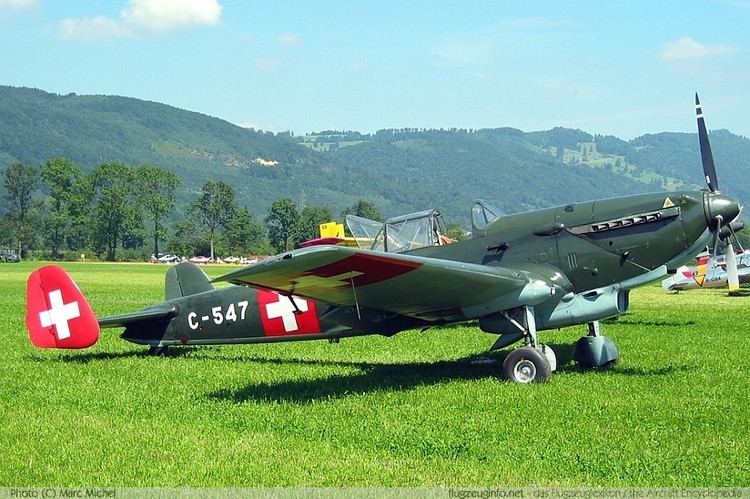 | ||
Manufacturer | ||
Rc scale airplane swiss air force ekw c 36 swiss multi purpose combat aircraft
The EKW C-36 was a Swiss multi-purpose combat aircraft of the 1930s and 1940s, built by the Eidgenoessische Konstruktionswerkstaette. It was a single-engined monoplane with a crew of two. It entered service in 1942, and despite being obsolete, remained in front line use until the early 1950s, and as a target tug until 1987.
Contents
- Rc scale airplane swiss air force ekw c 36 swiss multi purpose combat aircraft
- Sm 2014 c 3603 schweizer luftwaffe ekw c 36 model r c warbird
- Development and design
- Operational history
- Variants
- Operators
- Specifications C 3603
- References
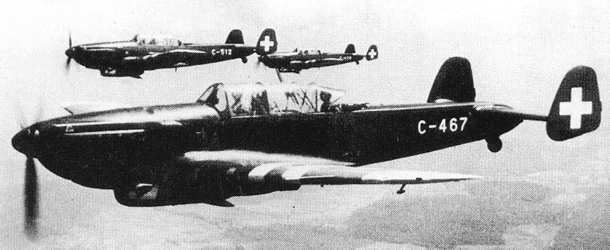
Sm 2014 c 3603 schweizer luftwaffe ekw c 36 model r c warbird
Development and design
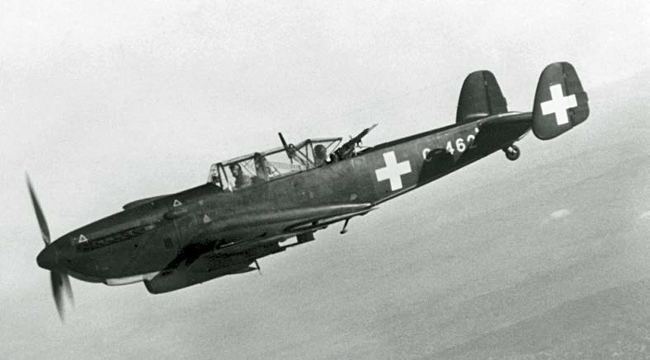
In 1935, the Swiss Air Force developed a requirement for a replacement for Switzerland's Fokker C.V-E biplanes, which were used as reconnaissance aircraft, escort fighters and patrol aircraft. To meet this requirement, the Swiss Federal Constructions Works (EKW) proposed two designs, a modernised C.V, the EKW C-35 and an all new monoplane, the C-36.
Orders for 80 C-35s were placed in 1936, but no decision was made about whether to order the C-36, with preference being given to the purchase of foreign twin-engined aircraft for the role, attempts been made to buy Messerschmitt Bf 110s from Germany or Potez 63s from France. These attempts failed, however, and in 1938 approval was given for EKW to complete detailed design of the C-36 and to build a prototype.
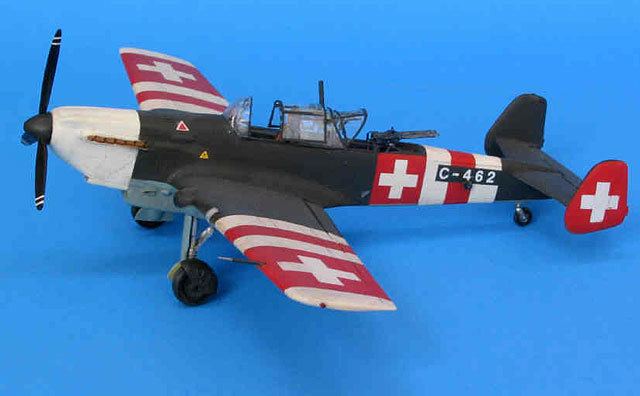
The first prototype, the C-3601, carried out its maiden flight on 15 May 1939. It was a low-winged cantilever monoplane of all-metal construction. It was powered by a single licence-built Hispano-Suiza 12Y engine driving a three-bladed variable-pitch propeller. A crew of two sat in tandem under a long, continuous canopy. The aircraft was fitted with a twin tail, and had a fixed tailwheel undercarriage.
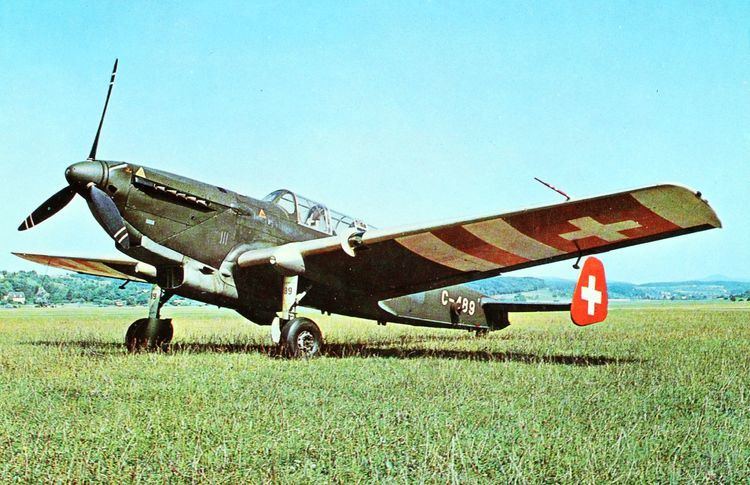
The C-3601 crashed on 20 August 1939 due to wing flutter, but a second prototype, the C-3602, which had a more powerful engine and a constant-speed propeller flew on 30 November that year. Testing was successful, and orders were placed in 1940 for an initial batch of 10 C-3603 with a retractable undercarriage.
Operational history

The C-3603s, along with EKW D-3801s, fought off trespassing aircraft to defend Swiss neutrality, but were soon relegated to training and target-towing duties. The last variant of the C-36 aircraft family, the turboprop powered C-3605, had its maiden flight in 1968 remaining in service with the Swiss Air Force until 1988. Thanks to its Black and yellow striped colouration, the C-3605 was called "Flying Zebra Crossing". After retirement several aircraft were kept airworthy on the Civil aircraft register.
Variants
Operators
Specifications (C-3603)
Data from Enduring Tug:The Swiss C-36 Series.
General characteristics
Performance
Armament
